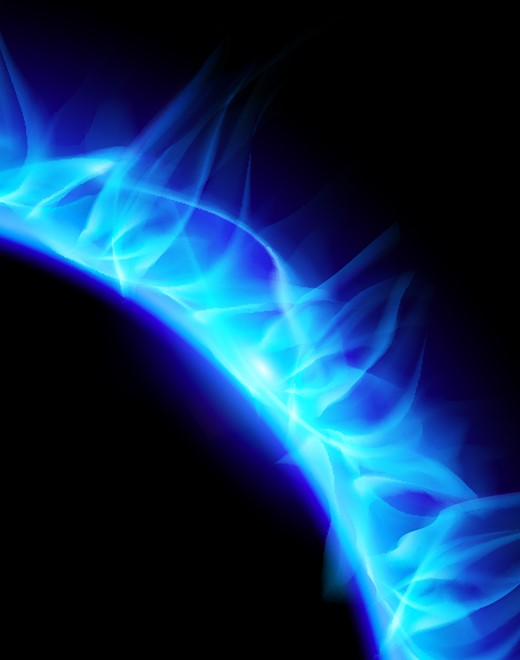Surface Treatment & Embossing
Inline Corona treatment surface modification for LSE substrates, liquid priming, and surface embossing can be used to improve adhesion during lamination or die-cutting processes.
Surface Treatment Options |
||
Process |
Benefits |
|
 |
INLINE CORONA TREATMENT High energy Corona discharge effectively severs molecular bonds on the surface of the material and attach to free radicals within the Corona discharge. This results in enhanced surface energy and increased adhesion of various materials. |
|
 |
LIQUID PRIMING Liquid priming is the controlled application of a specially formulated liquid primer or coating onto the substrate's surface before further processing. The primer enhances the substrates adhesion properties by creating a more suitable surface for bonding. |
|
 |
SURFACE EMBOSSING Surface embossing involves creating patterns or microstructures on the substrate's surface through thermo mechanical processes. These patterns create micro grooves within the adhesive surface eliminating trapped air during application. |
|
Inline Corona Treatment for LSE Substrate Surface Modification
Surface treatments modify the surface of low surface energy (LSE) substrates during the die-cutting process to allow application of pressure sensitive adhesive (PSA) to materials which have an inherent LSE that were previously incompatible with PSA.
1. INCREASES SURFACE ENERGY DYNE
Inline Corona Treatment increases the surface energy dyne level of LSE materials such as foams, composites, acrylics, films and PP by up to 3 times.
2. ENABLES APPLICATION OF PSA
This highly effective treatment allows the lamination of conventional PSA’s onto LSE substrates that would otherwise not be available, without any reduction in manufacturing speeds, eliminating the need for high cost chemical surface preparation and specialist adhesives.
3. BROADENS RANGE OF MATERIALS
Using this surface modification during the die-cutting process and prior to bonding, coating, laminating or sealing broadens the range of adhesive tapes and substrates that are compatible with LSE materials previously unsuitable for the same application.
HOW CORONA TREATMENT WORKS
- The treatment creates a high voltage electrical discharge known as Corona Discharge
- High energy Corona Discharge effectively severs molecular bonds on the surface of the material and attach to free radicals within the Corona Discharge
- This surface modification results in enhanced surface energy and increased adhesion of various materials
CLEANER MATERIALS
Particularly important during the manufacture of medical components, devices and equipment, enabling Material Scientists to utilise cleaner materials and helping to replace substrates such as vinyl and latex. With greater design flexibility, we are able to support our clients in the development of tomorrow's technology.
Heat application For Thermally Activated Adhesives
Thermally activated adhesives require heat to initiate bonding. Enhancing the substrate's surface properties through corona treatment or priming provides several advantages during lamination or die-cutting processes.

Incorporating these surface modification techniques into the production process is particularly valuable when working with challenging substrates or when achieving strong, reliable bonds is critical. By addressing the inherent limitations of LSE substrates, we can enhance the performance and durability of products that involve lamination, die-cutting, or other adhesive bonding processes.
- Improved Adhesion: Modified surfaces offer a better bonding platform, allowing adhesives to create strong and reliable bonds
- Reduced Delamination: Enhanced adhesion minimises the risk of delamination or adhesive failure during processing or subsequent use
- Efficient Lamination: With improved adhesion, lamination processes become more efficient, as adhesives adhere quickly and uniformly to the treated substrate
- Consistent Results: The uniform surface treatment achieved through corona treatment, priming, leads to consistent bonding results across production runs
- Enhanced Product Quality: Improved adhesion and uniform bonding contribute to the overall quality and reliability of the final products
advanced Materials
MATERIALS WE CONVERT INTO CUSTOM DIE-CUT COMPONENTS

Adhesive Tapes
We have the flexibility to convert all our industrial double-sided adhesive tapes into customised solutions for customer specific bonding and mounting applications, available in various formats, including die-cut components, rolls, sheets, and adhesive pads.
Learn More

Surface Protection
Tecman’s range of high performance surface protection film and masking tapes are used to protect surfaces during manufacturing processes in demanding industries such as automotive, electronics, and wind blade protection in the renewable energy sector.
Learn More

Foam & Acoustic Materials
Our high-performance foam and acoustic materials are converted into custom components for a wide range of industries and applications, including sealing and cushioning, through to NVH management in electric vehicle powertrains.
Learn More

Thermal Management Products and Materials
Our portfolio of thermal management materials and products include thermal cell barriers, thermal interface materials and other thermally and electrically conductive materials for critical applications such as thermal management in EV battery packs.
Learn More
